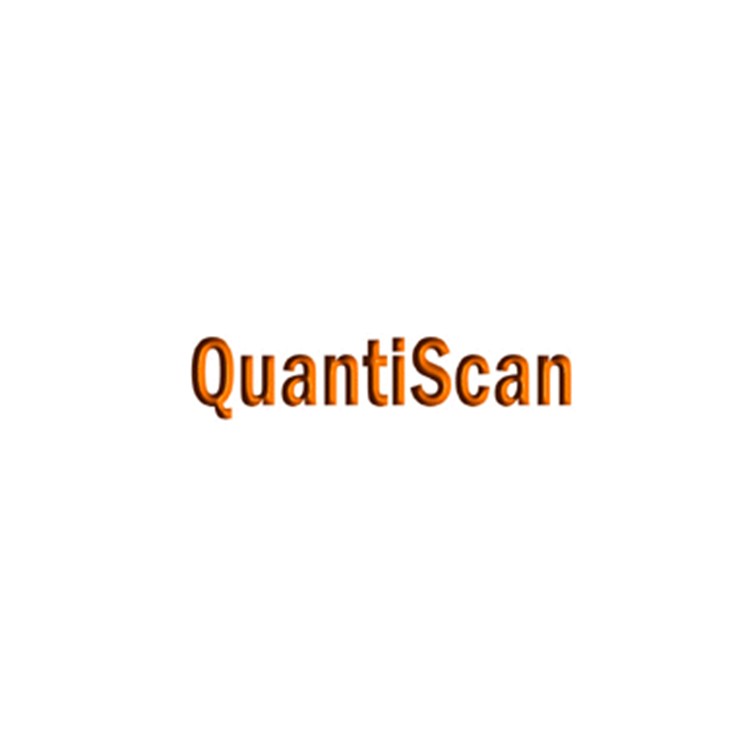QuantiScan 3 光密度分析軟體

- QuantiScan 3 光密度分析軟體
-
類別生化統計分析軟體
-
介紹QuantiScan for Windows具有類似於復雜的密度計的功能,但成本卻很低。它能夠分析各種各樣的材料,包括聚丙烯酰胺和瓊脂糖凝膠、自動輻射圖、TLC板等。該程序可以直接接受來自任何TWAIN兼容的掃描儀以及大多數BMP、JPG或未壓縮的TIF文件的圖像進行分析。對於具有合理質量的帶狀凝膠,分析是高度自動化的,允許極高的數據吞吐量。幾乎任何類型的圖像都可以用Quantiscan的手動模式進行分析。
QuantiScan 3 optical density analysis software
QuantiScan for Windows has similar functionality to sophisticated densitometers but at a fraction of the cost. It is able to analyze a wide variety of material including polyacrylamide and agarose gels, autoradiograms, TLC plates, etc. The program will accept images for analysis directly from any TWAIN compliant scanner as well as most BMP, JPG or uncompressed TIF files. For laned gels of reasonable quality, the analysis is highly automated, allowing extremely high throughput of data. Almost any type of image can be analyzed with the manual modes of Quantiscan. Images can be pre-processed in a variety of ways within QuantiScan including crop, flip, invert, scroll and zoom.
Numeric, graphical and image output can be printed as reports and can also be saved as files or copied to the clipboard. The X,Y coordinates of densitometric profiles can output into a tabbed table for re-plotting in presentation graphics software such as Biosoft's FigSys. There is a separate module for analysis of discrete blots which can also be operated with automatic or manual blot detection.
Lane Analysis Mode
There is sophisticated lane processing and analysis for gels. Lanes of any width can be created manually or by using the unique automatic lane detection mode. There is also a facility to automatically set lanes at regular intervals for use with plates that have a preconfigured regular lane array. Lanes can be skewed or curved to allow for gel imperfections. Lane boundaries can be copied and the copies moved precisely into position with the cursor keys, for exact comparisons. Each lane can be labelled with an unique number both on its image and its densitometric profile plot. There are six options for automatic background subtraction: Minimum, Interpolated minimum, Valley, Edge, Polynomial and Manual. User-selected areas of images can be displayed as 3-D density maps which can be printed, saved or copied to the clipboard.
Once a lane has been defined, its densitometric profile plot is automatically drawn. Peaks can then be specified on the profile either manually by marking their center and edges, or automatically using a sophisticated peak search routine. Where appropriate, automatic fitting of Gaussian peaks can be performed. This automatic fitting uses a least-squares minimization technique to fit a sequence of peaks and a polynomial background to the given profile. The image of the currently-selected lane is shown laid-out horizontally under the lane densitometry profile. A cursor-controlled vertical line going across the profile and the lane image aids user examination of the peaks. The image and profile of a standard lane can be added for comparison with the first. Their alignment can be adjusted to aid accurate side-by-side comparisons. Peak areas are calculated by integration using Simpson's rule and, if the automatic fitting option has been used, the area of the fitted peak is also automatically calculated.
Calibration to a lane containing standard proteins may be made for automatic calculation of molecular weights. Calibration can also be made with a known standard solution such as those supplied with assay kits (just enter the position of its start line, its mol. wt. factor and the position of the solvent front, to give automatic calculation of mol. wts of unknowns). Parameters of any standard lane can be saved for between-plate comparisons. Calibration curve graphs and their fitted coordinates can be exported. Reports are generated for all peak parameters, including position, height, width, background and net area of peaks and, together with the graphical results, these can be printed, saved to disk or copied to the clipboard for transfer to other programs.
Blot Analysis Mode
QuantiScan offers a separate mode to analyze discrete blots. The blots can be automatically detected or manually defined. Their number, position, height, area and densitometric volume are automatically reported. There is a special module for automatic analysis of regularly arrayed blots. Automatic background subtraction is an option. Calibration, based on densitometric volume of standard blots can be done and this allows blot mode to be used for assays.

系統需求
Windows Vista, 7, 8 and 10 (32 and 64 bit)

QuantiScan 3 光密度分析軟體
適用於Windows的QuantiScan具有與復雜的密度計類似的功能,但成本僅為其一小部分。它能夠分析多種材料,包括聚丙烯酰胺和瓊脂糖凝膠、放射自顯影、TLC 板等。該程序將接受直接來自任何 TWAIN 兼容掃描儀以及大多數 BMP、JPG 或未壓縮的 TIF 文件的圖像進行分析。對於質量合理的泳道凝膠,分析是高度自動化的,允許極高的數據通量。幾乎任何類型的圖像都可以使用 Quantiscan 的手動模式進行分析。
數字、圖形和圖像輸出可以作為報告打印,也可以保存為文件或複製到剪貼板。密度分佈圖的 X、Y 坐標可以輸出到選項卡式表格中,以便在演示圖形軟件(例如 Biosoft 的 FigSys)中重新繪製。有一個單獨的模塊用於分析離散印跡,也可以通過自動或手動印跡檢測進行操作。
車道分析模式
有復雜的凝膠泳道處理和分析。可以手動或使用獨特的自動車道檢測模式創建任何寬度的車道。還有一個功能可以定期自動設置泳道,以用於具有預先配置的規則泳道陣列的板。通道可以傾斜或彎曲以允許凝膠缺陷。可以復制車道邊界,並使用光標鍵將副本精確移動到位,以進行精確比較。每條泳道都可以在其圖像和密度分佈圖上標有唯一編號。自動背景減除有六個選項:最小值、插值最小值、谷值、邊緣、多項式和手動。用戶選擇的圖像區域可以顯示為 3-D 密度圖,可以打印、保存或複製到剪貼板。
一旦定義了車道,就會自動繪製其密度剖面圖。然後可以通過標記其中心和邊緣手動或使用複雜的峰值搜索程序自動在輪廓上指定峰值。在適當的情況下,可以執行高斯峰的自動擬合。這種自動擬合使用最小二乘最小化技術將一系列峰值和多項式背景擬合到給定的輪廓。當前所選車道的圖像在車道密度測量剖面下方水平佈局。光標控制的垂直線穿過輪廓和泳道圖像,有助於用戶檢查峰。可以添加標準車道的圖像和輪廓以與第一個進行比較。可以調整它們的對齊方式以幫助進行準確的並排比較。峰面積是使用辛普森法則通過積分計算的,如果使用了自動擬合選項,也會自動計算擬合峰的面積。可以添加標準車道的圖像和輪廓以與第一個進行比較。可以調整它們的對齊方式以幫助進行準確的並排比較。峰面積是使用辛普森法則通過積分計算的,如果使用了自動擬合選項,也會自動計算擬合峰的面積。可以添加標準車道的圖像和輪廓以與第一個進行比較。可以調整它們的對齊方式以幫助進行準確的並排比較。峰面積是使用辛普森法則通過積分計算的,如果使用了自動擬合選項,也會自動計算擬合峰的面積。
可以對含有標準蛋白質的泳道進行校準以自動計算分子量。也可以使用已知的標準溶液進行校準,例如隨檢測試劑盒提供的標準溶液(只需輸入其起始線的位置、其摩爾重量因子和溶劑前沿的位置,即可自動計算未知數)。可以保存任何標準泳道的參數以進行板間比較。可以導出校準曲線圖及其擬合坐標。為所有峰參數生成報告,包括位置、高度、寬度、
印跡分析模式
QuantiScan 提供了一種單獨的模式來分析離散印跡。可以自動檢測或手動定義印跡。它們的數量、位置、高度、面積和密度體積會自動報告。有一個特殊的模塊用於自動分析規則排列的印跡。自動背景扣除是一種選擇。可以根據標準印蹟的光密度體積進行校準,這允許將印跡模式用於檢測。

CrystalMaker X 化學分子建構軟體
CrystalMaker X 是一個全新的程序,從頭開始為最新的 Mac 和 Windows 操作系統開發。每一行代碼都經過重新編寫,採用全新的面向對象架構、全新的基於 OpenGL 的圖形引擎、新的界面設計以及全新的、完全集成的結構庫。
ChemOffice V19.0 分子結構繪圖軟體
ChemOffice 是一套科學智能的個人生產力工具集成套件,可幫助科學家有效地跟踪他們的工作,更深入地了解他們的數據並專業高效地製作科學報告。
GraphPad Prism 10 生物統計軟體
GraphPad Prism 10 是一款全球知名的科學繪圖和數據分析軟體,幫助研究人員更快、更輕鬆地進行實驗數據分析和呈現。它提供了豐富的分析工具和圖表模板,支持不同領域的數據分析,如生物學、醫學、化學、物理學等。使用GraphPad Prism 10,您可以輕鬆地進行統計分析、曲線擬合、圖表繪製、報告生成等操作。其優秀的圖形設計和易於使用的介面,使您可以輕鬆地將您的研究成果呈現出來。如果您是一名研究人員或學術人員,GraphPad Prism 10是您不可或缺的工具。

